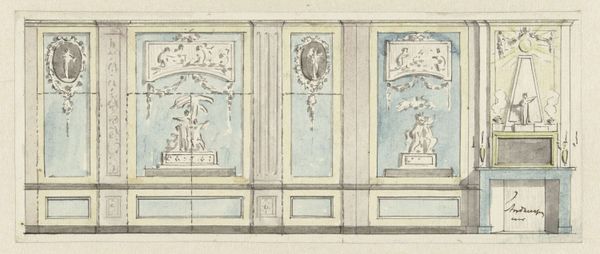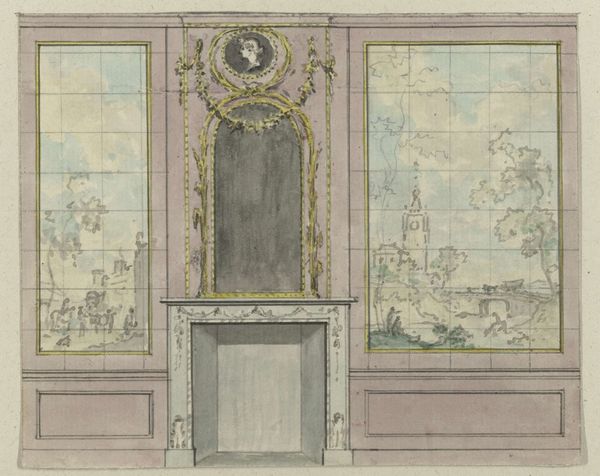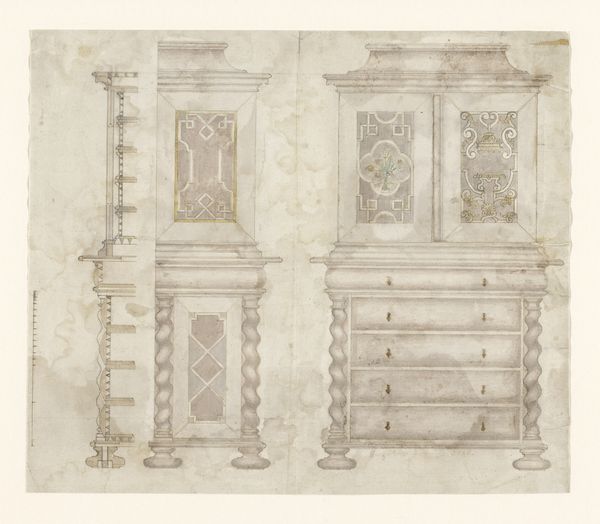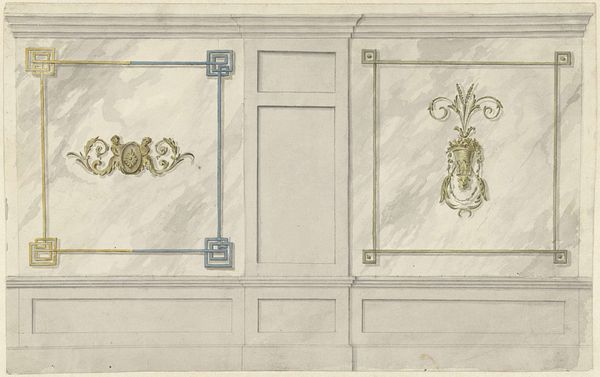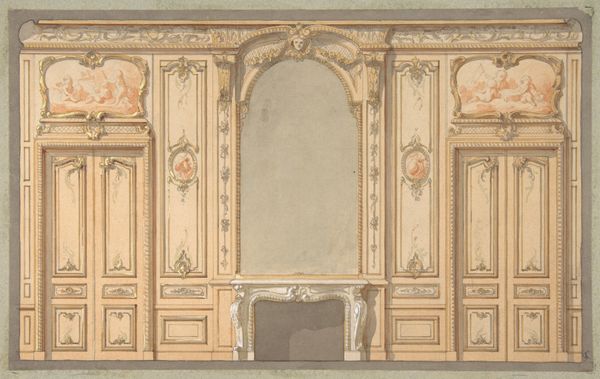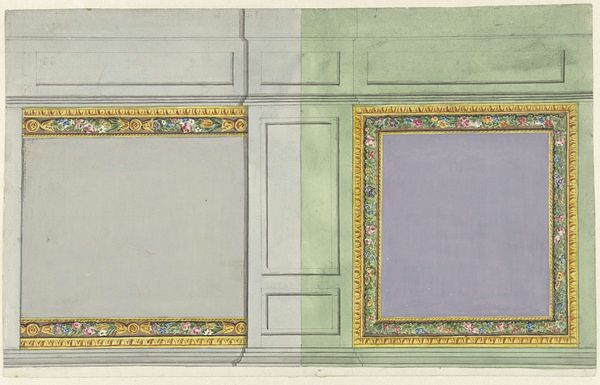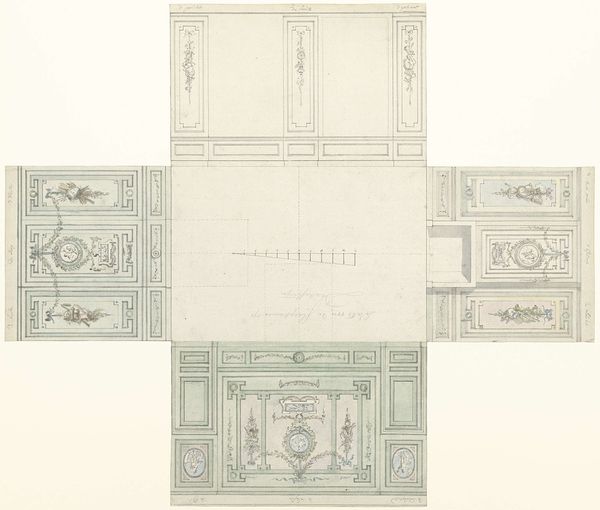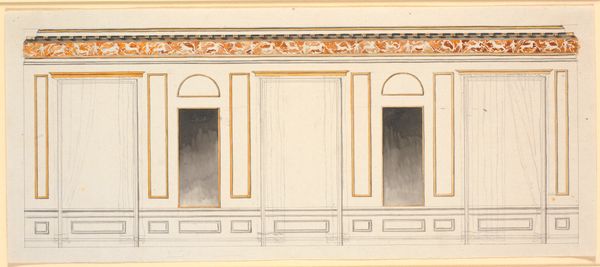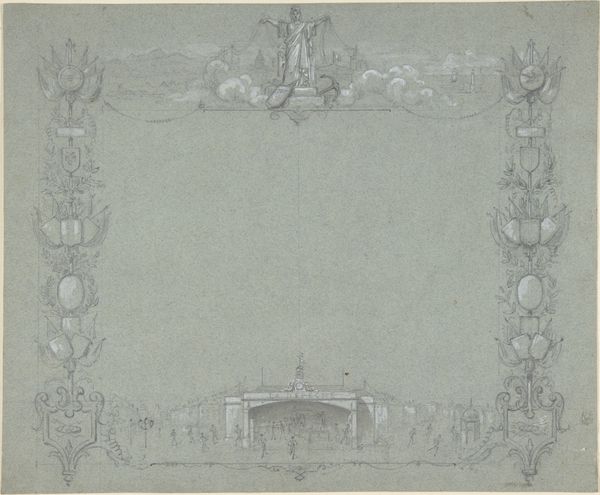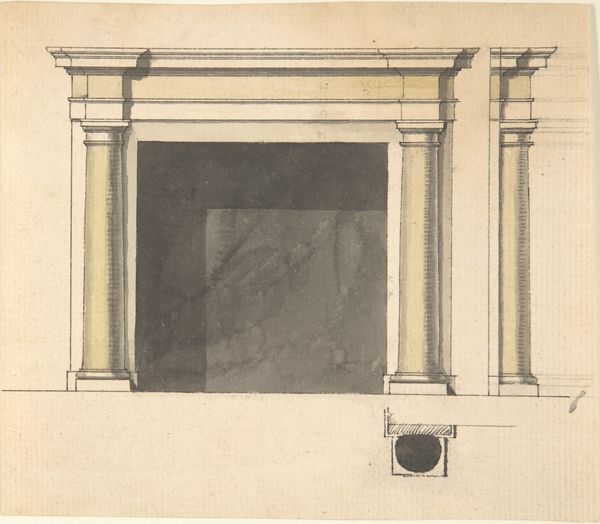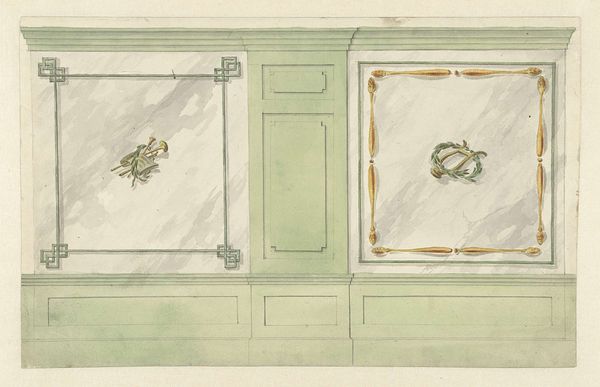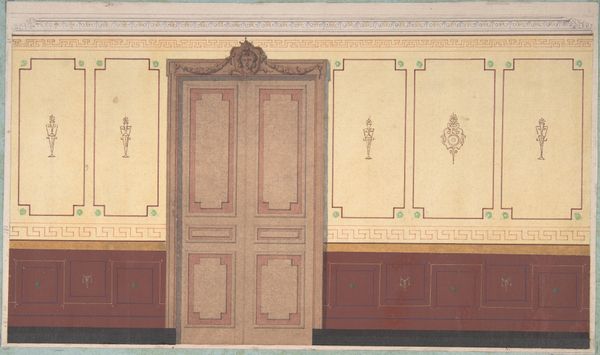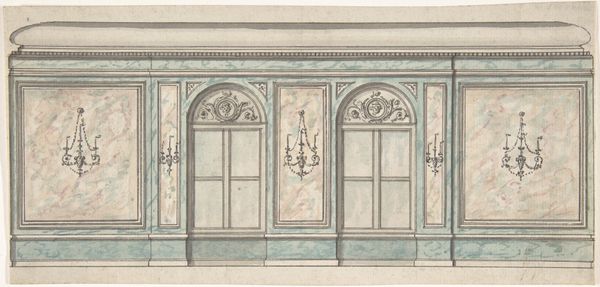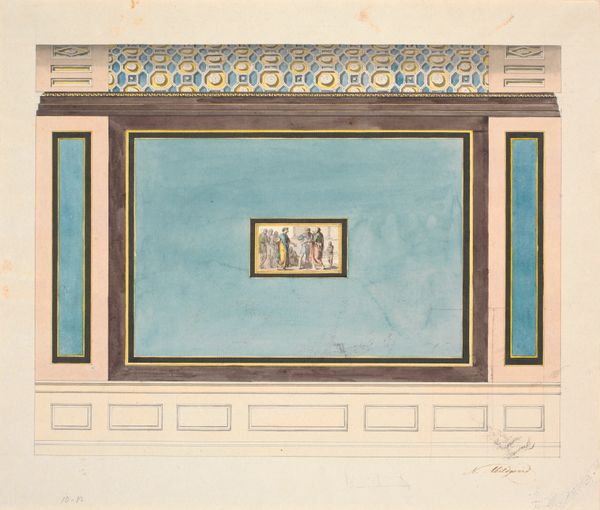
drawing, watercolor, ink, architecture
#
architectural sketch
#
drawing
#
neoclacissism
#
form
#
watercolor
#
ink
#
geometric
#
architectural drawing
#
line
#
architecture drawing
#
architecture
Dimensions: height 147 mm, width 217 mm
Copyright: Rijks Museum: Open Domain
Curator: Looking at this delicate design, it almost feels like stepping into a dream, or maybe a stage set for a Mozart opera. The neoclassical precision makes me imagine powdered wigs and hushed conversations behind silk fans! Editor: Exactly. What we’re seeing here is Jurriaan Andriessen's "Ontwerp voor behangschildering," a design for a wall panel dating back to the late 18th century. It's ink and watercolor on paper and showcases a vision of domestic space deeply enmeshed with social and political meanings of that period. Curator: Late 1700s… That's when everything was supposed to be simple and elegant again after all that Baroque flamboyance, right? All clean lines, right angles, those stylized classical columns. Although, simple might be too strong of a word, considering that mantlepiece… Editor: There’s nothing “simple” about social control or power structures, which is often exactly what neoclassical designs reinforced. Note the rigid symmetry and how it attempts to evoke a sense of order and rationality. But who really benefited from this "order"? Curator: I see your point. Although it looks calm, serene almost, perhaps that impression of control can feel a little…oppressive, in a way? Editor: Think of it as a carefully constructed facade, mirroring the social hierarchies of the time. A room like this wouldn't just be for living; it would be a performance space where identities were meticulously presented and maintained, and inequalities perpetuated. Curator: Well, now I can’t unsee it! Still, there's a certain wistfulness about the drawing itself, a feeling of "what if?" The washes of watercolor, the fragility of the ink lines, it all suggests a beauty that's almost ephemeral. Editor: I agree. Perhaps it’s that tension - between the rigidity of the form and the fragility of its rendering – that speaks to us today. We appreciate its aesthetic qualities but must recognize that its design served as a quiet backdrop for maintaining an exclusive, unequal social world.
Comments
No comments
Be the first to comment and join the conversation on the ultimate creative platform.
